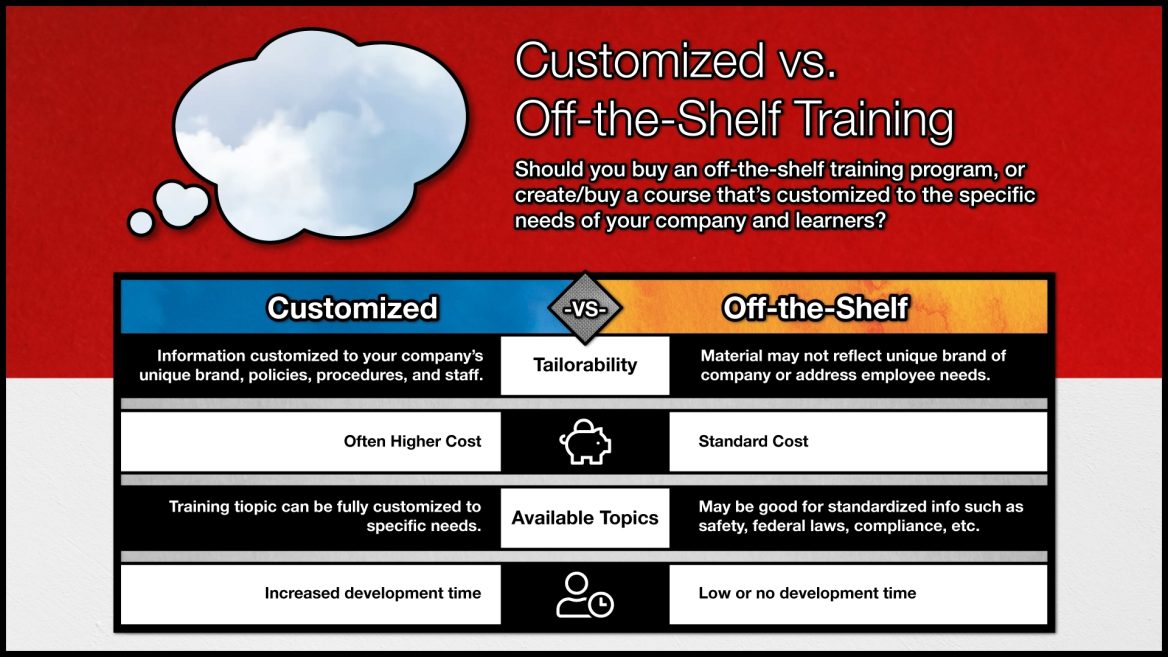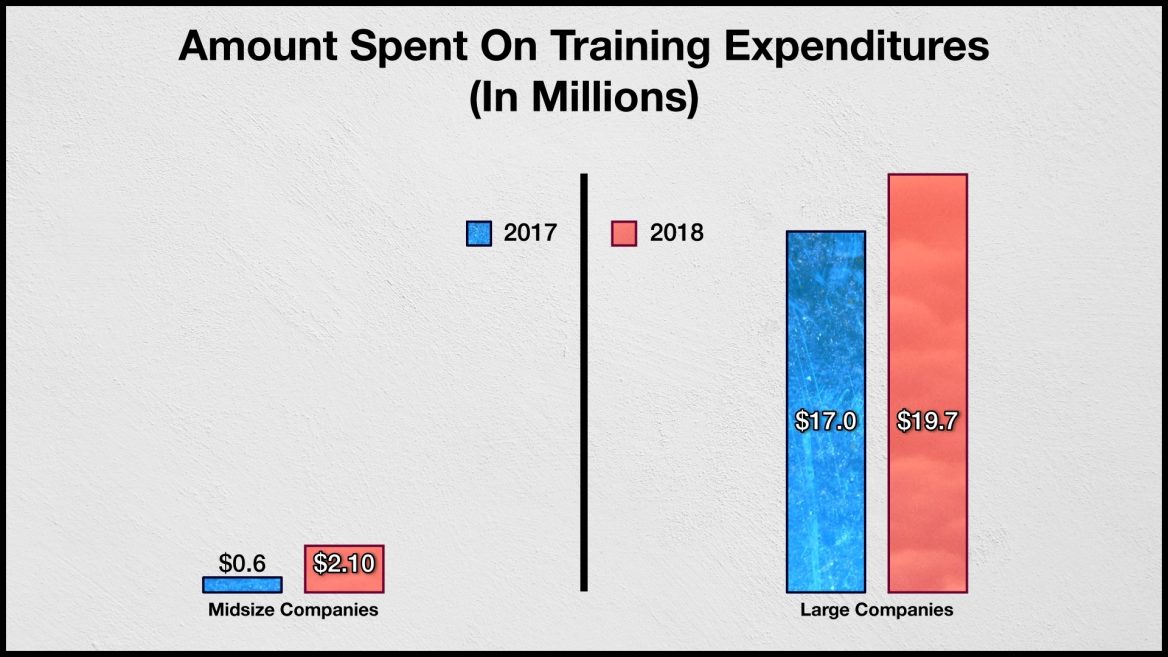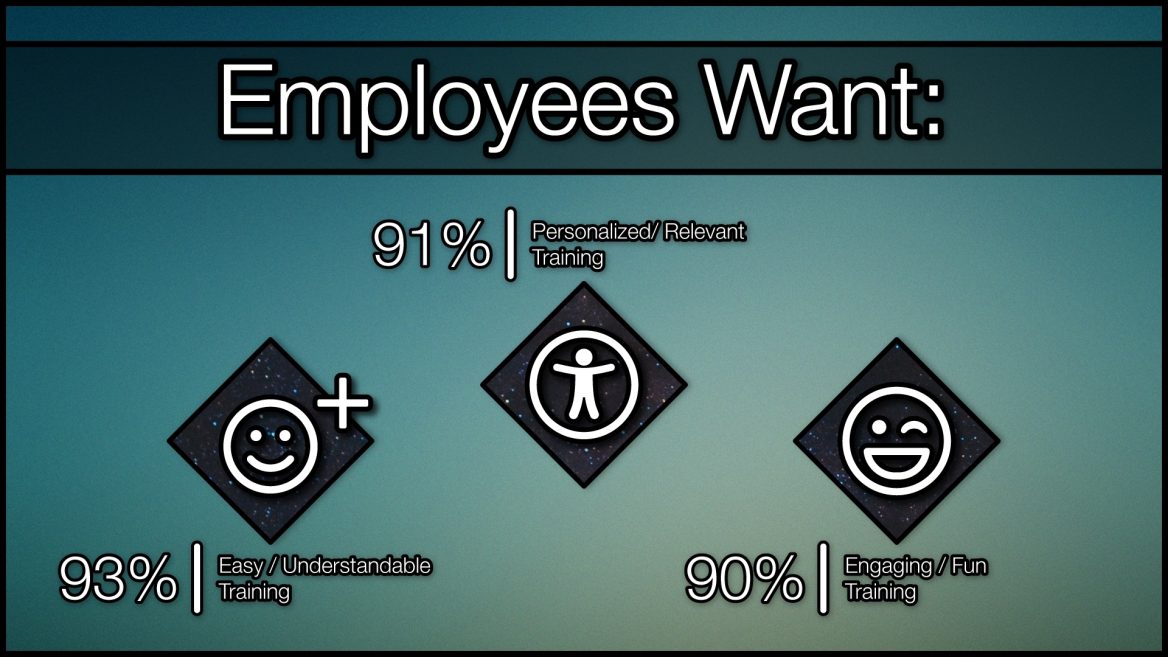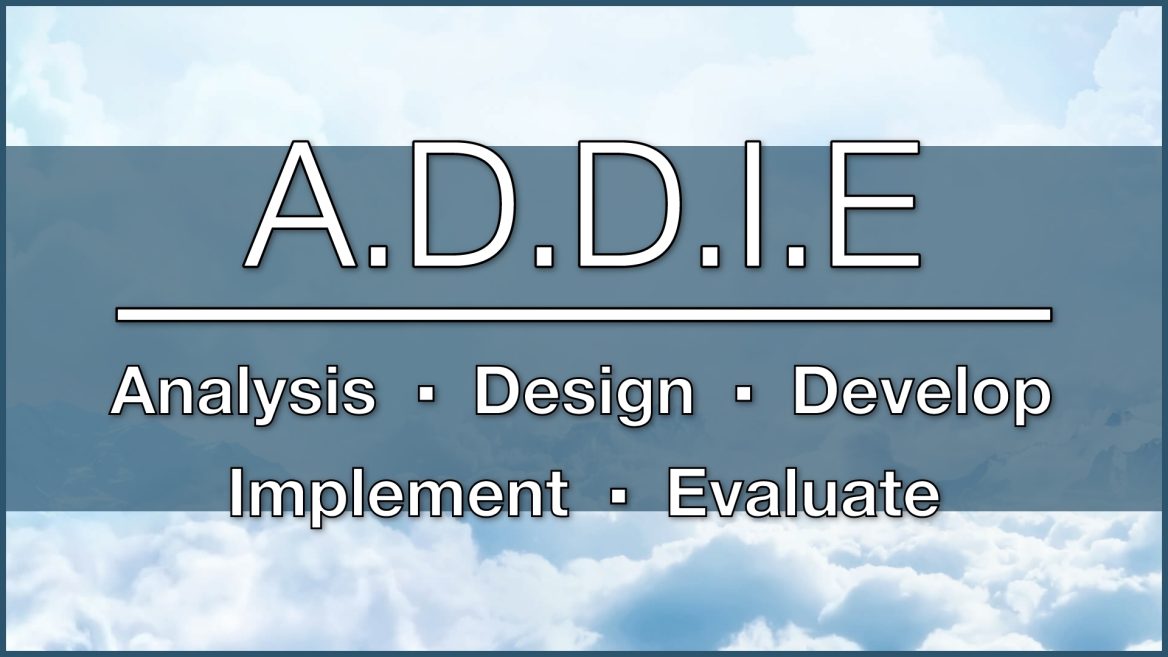Customized Training
Workplace training is one of the most effective tools a company can use to increase productivity and profit. Figuring out what type of training to provide for your organization can be a challenge. What’s the right fit for you – standard, off-the-shelf or a more customized training offering? How much of an investment in time and money is required? How do you make sure to choose the right training that matches your organization’s needs?
In this guide, you will learn about the benefits of customized training, the ROI, and how to develop a customized training solution that’s built from solid data that will provide your employees the skills they need to excel in the workplace.
What is Customized Training?
Customized training is a type of training that is created to meet your organization’s specific business needs and goals. It involves analyzing, designing, enhancing, and implementing trainings that are unique to an organization’s needs and goals. For maximum impact and value. Effective customized training should be rooted in solid instructional design and include specific learning outcomes linked to company goals, customized content, relevant case material, skill-building practice, and a post-training assessments. How do you determine if standard off-the-shelf training or customized training is right for your organization? The chart below illustrates a side-by-side comparison of these training approaches.
Customized Training
- Higher transfer of learning/application of knowledge
- Information customized to your company’s unique brand, policies, procedures and staff
- Often higher cost
- Increased development time
- Focuses on efficiency and results
Off-the-Shelf Training
- Material may not reflect unique brand of company or address employee needs
- Often generic from one company to the next
- May be good for standardized information – like federal laws, compliance, safety, etc.
- Quick to no development time
- Standard cost
Do you think that customized training fits the bill for the training goals you want to accomplish? Let’s continue diving into the topic to learn more.
What are the benefits of customized training?
Designing and delivering innovative, interactive training that actively engages the learner on content relevant to the organization’s needs is the overall goal. For employees and companies alike, customized training has many benefits. One particular benefit is the increase in productivity. Productivity is driven by the employees learning new skills that they can immediately apply on the job. According to a study conducted by the National Center on the Educational Quality of the Workforce (EQW), increased investments in workforce education were far more effective at increasing productivity, than increases in the value of equipment (a 10% increase in educational achievement resulted in productivity gain of 8.6% versus a 3.4% increase for upgraded equipment).
Employee retention is also impacted. Studies show when companies invest in learning and development, employees feel needed, challenged, and appreciated, which correlates to higher retention rates. When considering employee retention, LinkedIn’s 2018 Work Place Learning Report found 94% of employees would stay with a company that made an investment in their career through training (learning.linkedin.com). With increased knowledge from training, employers often notes that 1) managers are able to lead more effectively, 2) staff are better equipped to communicate effectively, and 3) company morale increases.
The benefits of customized training include:
- Gaining new skills
- Improving existing skills and knowledge
- Enhancing performance
- Developing leadership
- Improving productivity
- Creating more effective communication
- Generating workplace awareness
More than ever, corporations are choosing to make significant investments in their employees through training. The outcomes often show an impressive return on investment. Spending on training has more than tripled while helping to improve profitability and providing a good return on investment on each dollar spent for training. Quality training improves team leadership and communication, which in turn increases customer satisfaction; ultimately increasing profits.
Customized training can elevate a company as a whole in achieving its business goals and growth plan. Some specific benefits of customized training include:
- helps close the employee skill gap
- assists in upskilling employees
- improves attraction and retention
- elevates employee performance
- builds culture and employee engagement
- development of technical skills
- strengthens leadership
- increases return on investment
Average training expenditures for large companies increased from $17 million in 2017, to $19.7 million in 2018. Spending for midsize companies more than tripled, rising from $600,000 to $2.1 million in 2018. Reports from the Association for Talent Development (ATD) show that companies who offer comprehensive training programs have 218% higher revenue per employee than companies without formalized corporate training. These companies also enjoy a 24% higher profit margin than those who spend less. According to ATD, employers increased their per-employee spend on training in 2017, up nearly 2% to $1,296. (https://www.td.org).
At the same time, the type of training provided has shifted from in-person only, to a combination of classroom and computer based training. Roughly 69% of 2018 training hours were delivered using a blended learning model where the employee had person-to-person and virtual (online) interactions. This number is up from 2017, where only 35% of training hours were blended (trainingmag.com).
Training Statistics
When a company invests time and money to train employees, it should be guaranteed that they walk away with applicable skills. Unfortunately, this isn’t always the case. How can your company ensure these desired skills are being applied? The solution is to design the training with the same focus that you would design and develop a new product or service and always start by conducting a training needs analysis to identify gaps in existing knowledge and skill sets.
The Industry Standard in Instructional Design
One of the most common instructional design methodologies used by instructional designers is ADDIE or analysis, design, develop, implement, evaluate. When it comes to determining training needs, coming up with relevant interventions and evaluating outcomes, the ADDIE method is the industry’s gold standard. The ADDIE model is easy to use and supports any type of training topic. ADDIE has clearly defined steps that strategically approach training design to ensure curriculum is effective and relevant to the audience and desired learning objectives:
Analysis
Identification of all the variables that need to be considered when designing the course, such as learner characteristics, learners’ prior knowledge, resources available, etc.
Design
This step focuses on identifying learning objectives and how materials will be created and designed, and deciding on the selection and use of technology, such as an LMS, video or social media.
Develop
The creation of content, including whether to develop in-house or outsource, copyright clearance for third party materials, loading of content onto a website or LMS, etc.
Implement
This is the actual delivery of the course, including any prior training or briefing of learner support staff, and student assessment.
Evaluate
Feedback and data is collected in order to identify areas that require improvement and this feeds into the design, development and implementation of the next iteration of the course.
Using an instructional design framework like this provides a roadmap that helps ensure the learners and their organization achieve individual learning and performance goals. This is crucial to customizing a curriculum to fit your company’s unique brand, training needs and outcomes, and organizational strengths and goals.





